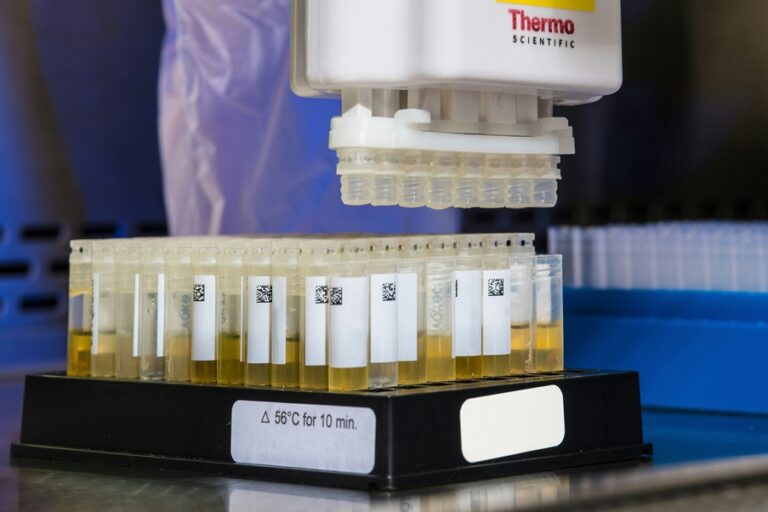Some people start panicking the second the word test comes up, while others have a fear of going to the doctor. When the two are combined, it’s easy to feel a little unnerved. After all, you’re getting ready to go through two things at once that make you uncomfortable.
Sometimes, knowing a little more about the STD testing process can help alleviate some concerns. Whether you want to learn more about ICD 10 std screening or simply want some insight into the testing process, we have the answers to some of the most commonly asked questions.
Can You Have an STD Without Realizing It?
Not all STDs start displaying immediate signs and symptoms—chlamydia is an example. The sexually transmitted infection (STI) can live in your body for a few weeks before noticeable symptoms appear.
Herpes is a virus that doesn’t always display symptoms. You can have the virus for years before an outbreak appears. Did you know it can take decades for Syphilis symptoms to become obvious?
You may also be wondering if you can still pass an STD on to others if you don’t know you have the infection. The answer is yes. STDs can spread even if you’re not showing any signs or symptoms.
How Often Should You Schedule STD Testing?
Even if you’re in a long-term, exclusive relationship with your partner, it’s still a good idea to be tested for STDs at least once a year. An easy way to remember to schedule the test is to combine it with your annual physical exam. This way, you’re only going to the doctor once.
If doctor visits make you nervous, keeping them to a minimum is always a bonus. However, if your dating life is in full swing, meaning you’re not in an exclusive relationship, you may want to schedule STD testing more often. Consider getting testing every four or six months to protect your health and that of your partners.
You may be okay taking an at-home test. You can find the testing kits at most pharmacies. However, keep in mind that at-home tests only check for a few STDs. You may still need to schedule an additional visit to your healthcare provider.
What’s Involved in the STD Testing Process?
If you decide to go with an at-home kit, not a lot is involved in the testing process. You swab the inside of your mouth, enclose the sample, and send the kit in the mail to the lab. The process is simple and painless. Don’t forget, at-home kits don’t test for all types of sexually transmitted diseases. For example, herpes and HIV can’t be detected with at-home testing kits.
Going to your physician or a clinic usually means answering a few questions about your sexual activities. Your physician will also inquire about any symptoms and if your partner/s has previously tested positive for an STD.
The healthcare professional will take either a blood, saliva, or urine sample. The physician may swab your genitals, depending on which disease/s you’re being tested for. Your sample goes to the lab and you should receive your test results in a few business days. Getting results from at-home testing kits usually takes longer, typically anywhere from one to three weeks.
You can take a rapid HIV test, it’s offered at most clinics and labs. Even though this type of test only checks for the presence of HIV, you typically get the results back in minutes.
What Happens If I Ignore STD Symptoms?
Treating most STDs is relatively easy. Antibiotics are the commonly prescribed treatment method. Some STDs like HIV are incurable but you can still manage your symptoms. So, what adverse health effects can you see if you don’t treat a sexually transmitted disease?
- Pelvic inflammation
- Infertility
- Blindness
- Neurological issues
- Headaches
- Memory loss
Pregnant women can also endanger their unborn child if they skip treating an STD. This can include miscarriage, stillbirth, and infants being born with physical and/or neurological problems.
What Are ICD 10 Codes?
You’re going to see some codes and what looks like random letters and numbers on your STD test. What do these codes mean? The codes help medical professionals create a standardized diagnosis for STDs. ICD 10 codes are also used in the testing and billing process.
Each STD receives a specific ICD code that’s used throughout the U.S. By eliminating confusion, healthcare professionals know which test to give a patient and how to properly diagnose and treat the STD.
Taking a test, even one for your health can be nerve-racking. Hopefully, these answers will help make you feel a little more at ease about your STD test. Just keep in mind that STD testing is a vital part of your overall healthcare plan.
How useful was this article ?
Click on a star to rate it!
Average rating 0 / 5. Vote count: 0
No votes so far! Be the first to rate this post.
We are sorry that this post was not too useful for you!
Let us improve this post!
Tell us how we can improve this post?















